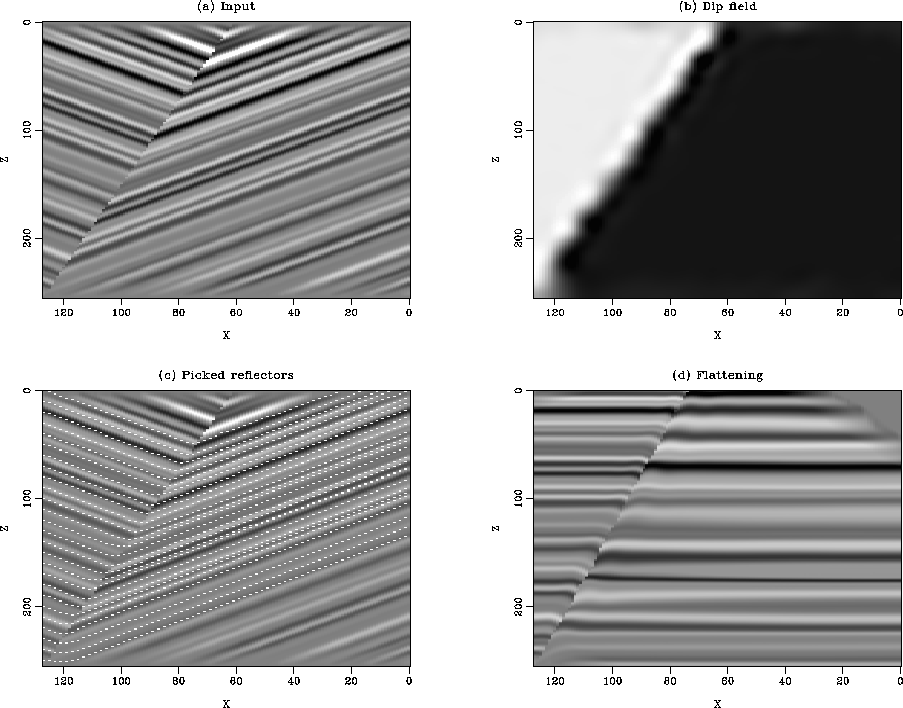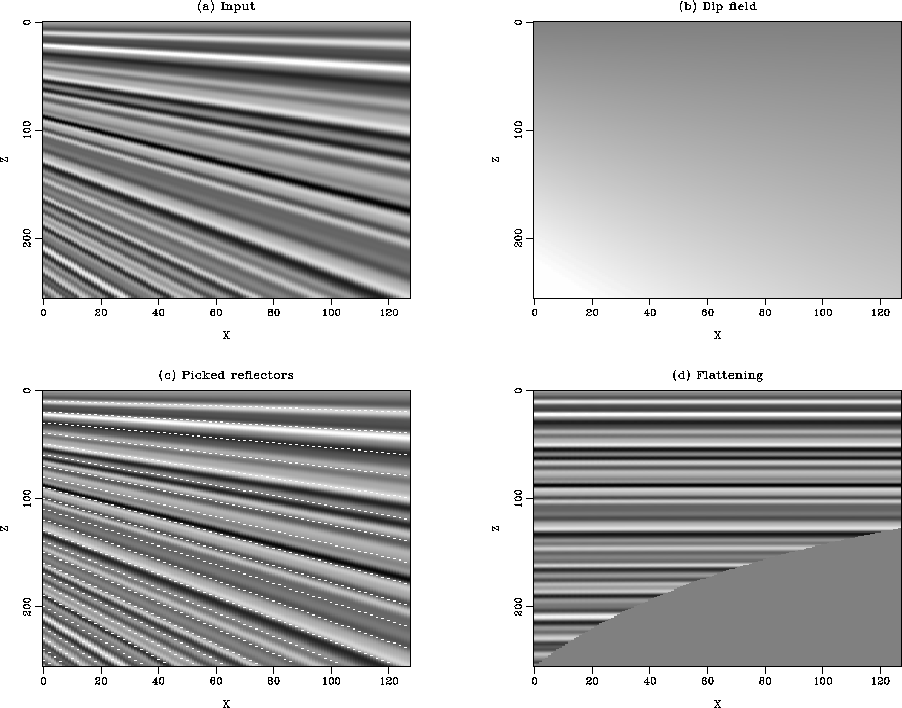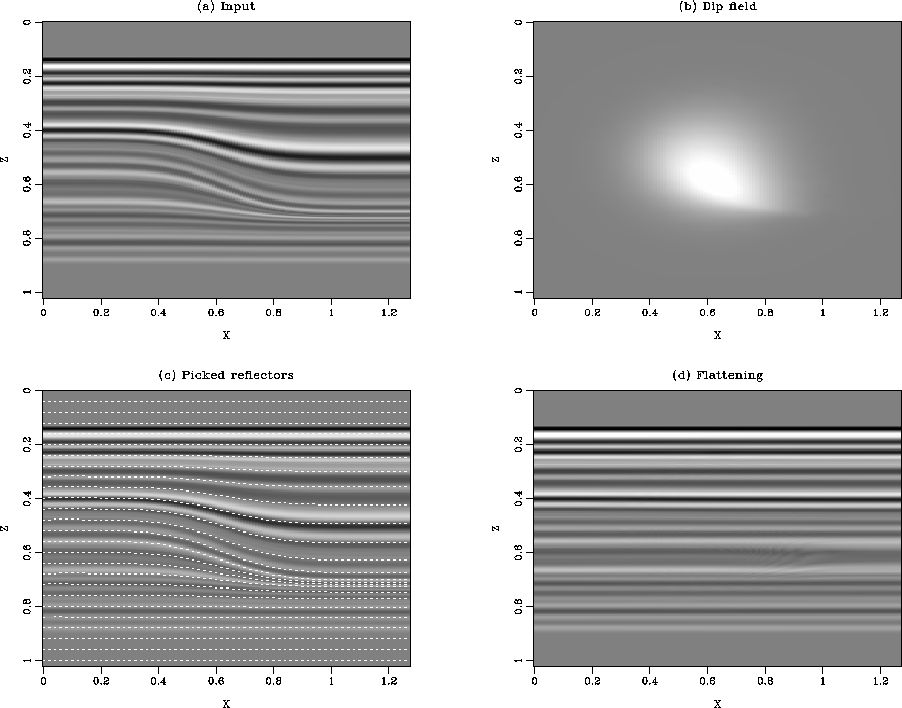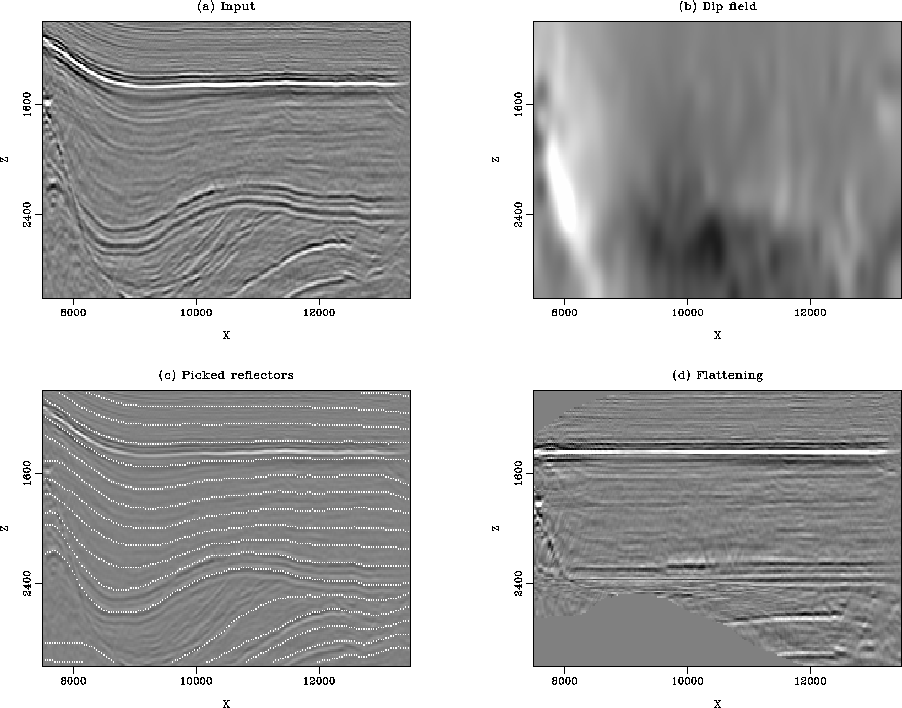




Next: 3-D data examples
Up: Guitton et al.: Non-linear
Previous: Theory of time/depth delays
The 2-D algorithm, a simple extension of the 3-D algorithm, is illustrated
first on five synthetic (Figures ![[*]](http://sepwww.stanford.edu/latex2html/cross_ref_motif.gif) to
to
![[*]](http://sepwww.stanford.edu/latex2html/cross_ref_motif.gif) ) and one field data examples (Figure
) and one field data examples (Figure ![[*]](http://sepwww.stanford.edu/latex2html/cross_ref_motif.gif) ).
All these figures are organized as follows: panel (a) shows the input
data, panel (b) shows the estimated dip field using Fomel's technique
Fomel (2002), (d) shows the picking result where the seed
point starts from the reference trace every ten samples in
time/depth, and (d) shows the flattening result. The field data
example is a 2-D slice extracted from the Elf (now Total) L7D dataset
after common-azimuth depth migration Vaillant et al. (2000).
All these examples illustrate that the time/depth delay estimation
process is very accurate and robust.
unconformity
).
All these figures are organized as follows: panel (a) shows the input
data, panel (b) shows the estimated dip field using Fomel's technique
Fomel (2002), (d) shows the picking result where the seed
point starts from the reference trace every ten samples in
time/depth, and (d) shows the flattening result. The field data
example is a 2-D slice extracted from the Elf (now Total) L7D dataset
after common-azimuth depth migration Vaillant et al. (2000).
All these examples illustrate that the time/depth delay estimation
process is very accurate and robust.
unconformity
Figure 1 (a) Model. (b)
Estimated dips. (c) Automatic picking of few horizons. (d)
Flattening result. The first trace is used for reference.




 unconformity2
unconformity2
Figure 2 (a) Model. (b)
Estimated dips. (c) Automatic picking of few horizons. (d)
Flattening result. The first trace is used for reference.




 unconformity3
unconformity3
Figure 3 (a) Model. (b)
Estimated dips. (c) Automatic picking of few horizons. (d)
Flattening result. The smoothness of the estimated dips introduce
small errors in the flattening result. The first trace is used for reference.




 thinning3
thinning3
Figure 4 (a) Model. (b)
Estimated dips. (c) Automatic picking of few horizons. (d)
Flattening result. The first trace is used for reference.




 down_lap2D
down_lap2D
Figure 5 (a) Model. (b)
Estimated dips. (c) Automatic picking of few horizons. (d)
Flattening result. The first trace is used for reference.




 elf2D
elf2D
Figure 6 (a) Model. (b)
Estimated dips. (c) Automatic picking of few horizons. (d)
Flattening result. The picked horizons follow extremely well
the structure of the data. The trace at X=12000 is used for reference.










Next: 3-D data examples
Up: Guitton et al.: Non-linear
Previous: Theory of time/depth delays
Stanford Exploration Project
5/3/2005
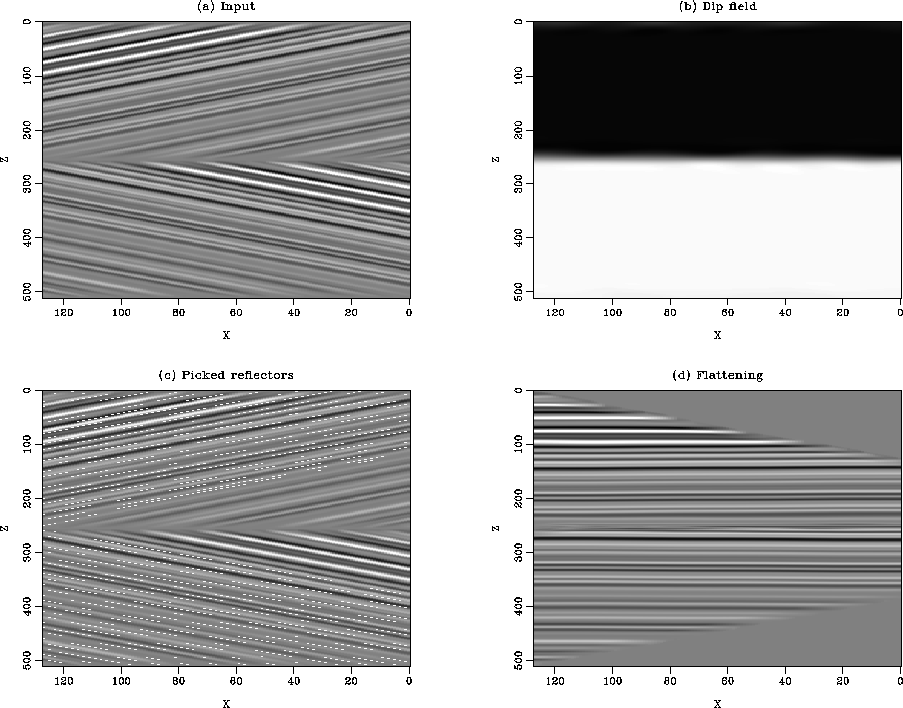
![[*]](http://sepwww.stanford.edu/latex2html/cross_ref_motif.gif) to
to
![[*]](http://sepwww.stanford.edu/latex2html/cross_ref_motif.gif) ) and one field data examples (Figure
) and one field data examples (Figure ![[*]](http://sepwww.stanford.edu/latex2html/cross_ref_motif.gif) ).
All these figures are organized as follows: panel (a) shows the input
data, panel (b) shows the estimated dip field using Fomel's technique
Fomel (2002), (d) shows the picking result where the seed
point starts from the reference trace every ten samples in
time/depth, and (d) shows the flattening result. The field data
example is a 2-D slice extracted from the Elf (now Total) L7D dataset
after common-azimuth depth migration Vaillant et al. (2000).
All these examples illustrate that the time/depth delay estimation
process is very accurate and robust.
).
All these figures are organized as follows: panel (a) shows the input
data, panel (b) shows the estimated dip field using Fomel's technique
Fomel (2002), (d) shows the picking result where the seed
point starts from the reference trace every ten samples in
time/depth, and (d) shows the flattening result. The field data
example is a 2-D slice extracted from the Elf (now Total) L7D dataset
after common-azimuth depth migration Vaillant et al. (2000).
All these examples illustrate that the time/depth delay estimation
process is very accurate and robust.


